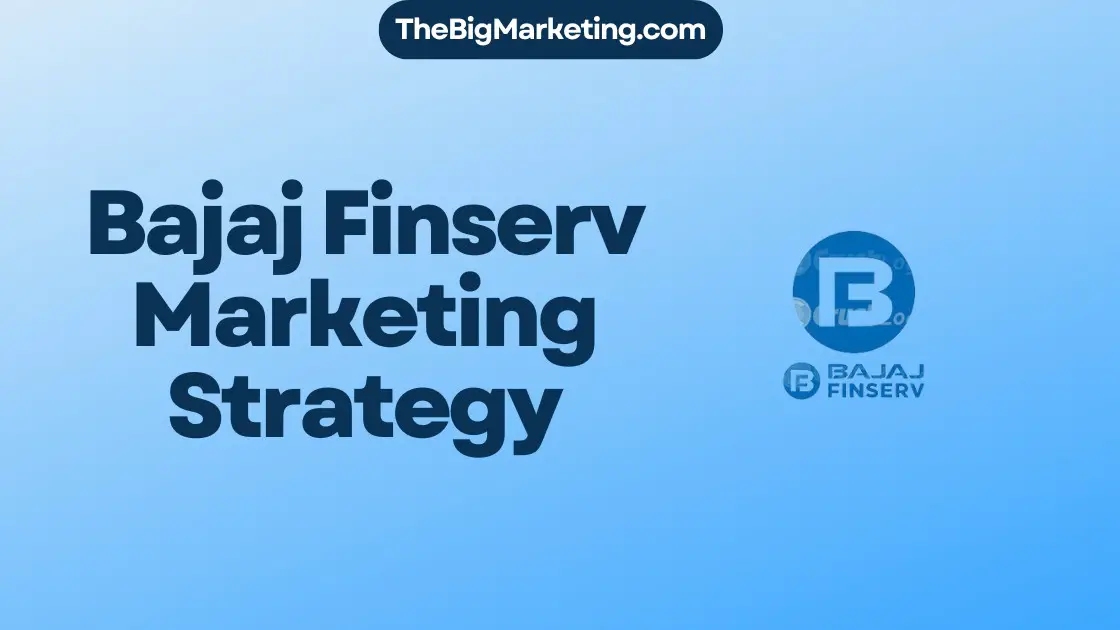Upselling and cross-selling are powerful strategies that can significantly impact sales revenue and customer loyalty. In the ever-evolving world of digital marketing and online sales tactics, businesses need to stay ahead by adopting effective and innovative strategies. One such strategy is upselling, where businesses encourage customers to upgrade to a higher-priced variant with added benefits. Cross-selling, on the other hand, involves suggesting complementary products to customers during their purchase journey.
In this comprehensive guide, we will delve into the concept of upselling and cross-selling, exploring their benefits and discussing effective strategies to implement in 2024. By optimizing the sales funnel and leveraging pricing strategies, businesses can enhance customer retention, generate increased revenue, and ensure long-term growth.
Key Takeaways:
- Upselling and cross-selling are powerful strategies that can optimize sales revenue and increase customer loyalty.
- By implementing upselling and cross-selling techniques, businesses can improve ROI and increase customer retention.
- Effective strategies include identifying cross-selling and upselling opportunities, offering product/service bundles, and personalizing customer experiences.
- Real-world examples include Semrush and Ikea, both of which successfully employ upselling and cross-selling strategies.
- Upselling and cross-selling strategies lead to improved ROI, increased customer satisfaction, and enhanced brand reputation.
What is Upselling?
Upselling is a sales strategy that aims to maximize revenue by encouraging customers to purchase a higher-priced variant of the product or service they are interested in. This approach involves highlighting the added benefits and features that come with the upgraded option, enticing customers to opt for a more expensive choice. By successfully implementing upselling techniques, businesses can achieve a higher average order value and increased profit margin.
One of the key advantages of upselling is its ability to boost customer lifetime value. Existing customers who are already interested in a particular product or service are more likely to be receptive to additional offers and are willing to spend more money. By persuading them to choose a higher-priced option with added benefits, businesses can increase the long-term value they gain from each customer.
Furthermore, upselling also contributes to a holistic shopping experience for customers. By presenting them with choices that align with their preferences and needs, businesses can enhance customer satisfaction and build stronger relationships. This personalized approach not only increases the chances of repeat purchases but also helps improve overall customer loyalty.
In addition, upselling allows businesses to optimize their sales strategy and financial performance. By increasing the average order value, companies can generate higher revenue from each transaction, leading to improved ROI. Moreover, the added benefits and premium features of higher-priced variants can justify the higher cost, resulting in higher profit margins.
When implementing upselling strategies, it is crucial for businesses to strike a balance between providing value to customers and respecting their budgets. Upselling should focus on offering relevant and genuinely beneficial options rather than pressuring customers into unnecessary purchases. By adopting an ethical approach to upselling, businesses can cultivate trust and loyalty, ensuring long-term success.
In summary, upselling is a sales strategy that leverages higher-priced variants with added benefits to increase the average order value, profit margin, and customer lifetime value. By implementing upselling techniques effectively and ethically, businesses can optimize revenue, enhance customer satisfaction, and strengthen customer relationships.
What is Cross-Selling?
Cross-selling is a key sales strategy that involves suggesting complementary products to customers who are already making a purchase. By offering additional products that enhance or complement the original purchase, businesses can increase the average order value and customer lifetime value. Cross-selling contributes significantly to ecommerce revenues and is an effective strategy for driving additional sales and increasing overall profitability.
When implemented strategically, cross-selling allows businesses to provide a more comprehensive solution to their customers’ needs. By suggesting products that complement the original purchase, businesses can enhance the overall customer experience and create a seamless shopping journey.
For example, imagine a customer purchasing a new smartphone. As part of the cross-selling strategy, the retailer could suggest a protective phone case, screen protector, and wireless headphones that are compatible with the smartphone. This not only increases the average order value but also provides the customer with a complete package to enhance their smartphone usage.
By leveraging cross-selling techniques, businesses can tap into the existing trust and engagement of the customer, thereby increasing the chances of a successful cross-sell. Additionally, cross-selling helps businesses to diversify their product offering and expose customers to a wider range of products or services.
Furthermore, cross-selling contributes to customer lifetime value by establishing a deeper connection with customers and encouraging repeat purchases. When customers feel understood and offered relevant products through cross-selling, they are more likely to develop loyalty towards the brand, resulting in long-term revenue growth.
Implementing cross-selling strategies requires businesses to analyze customer preferences, behavior, and purchase history. By leveraging customer data, businesses can identify patterns and opportunities for cross-selling. For instance, an ecommerce platform may analyze the browsing and purchase history of a customer who recently bought a coffee machine to suggest complementary products such as coffee capsules or a milk frother.
Overall, cross-selling is a powerful sales strategy that allows businesses to increase their average order value, customer lifetime value, and ecommerce revenues. By offering relevant and complementary products, businesses can enhance the customer experience, drive additional sales, and foster long-term customer loyalty.
Benefits of Upselling and Cross-Selling
Upselling and cross-selling offer a range of benefits for businesses, helping them optimize sales value, improve ROI, and increase customer retention. By implementing these strategies, businesses can provide a holistic shopping experience while maximizing long-term gains in terms of sales and revenue growth.
1. Optimized Sales Value
By effectively utilizing upselling and cross-selling techniques, businesses can optimize the value of each sale. Upselling encourages customers to purchase a higher-priced variant of a product or service, while cross-selling suggests complementary items that enhance their purchase. These strategies result in increased revenue and an improved return on investment (ROI).
2. Increased Customer Retention
Upselling and cross-selling contribute to increased customer retention by providing a personalized shopping experience. By offering products that match customers’ unique needs and preferences, businesses build trust and loyalty. Customers are more likely to continue purchasing from a brand that understands their requirements and offers relevant solutions, resulting in long-term customer relationships.
3. Holistic Shopping Experience
Upselling and cross-selling enable businesses to provide a holistic shopping experience by offering a comprehensive range of products. Customers appreciate the convenience of finding everything they need in one place, saving time and effort. This creates a positive impression of the brand and enhances customer satisfaction and loyalty.
4. Long-term Gains
Implementing upselling and cross-selling strategies leads to long-term gains in terms of sales and revenue growth. By optimizing each sale, businesses can generate increased revenue and improve their bottom line. Additionally, satisfied customers are more likely to become repeat buyers and recommend the brand to others, creating a positive cycle of growth and success.
| Benefits | Keywords |
|---|---|
| Optimized Sales Value | Upselling, cross-selling, optimize sales value, improved ROI |
| Increased Customer Retention | Upselling, cross-selling, increased customer retention, increased customer loyalty |
| Holistic Shopping Experience | Upselling, cross-selling, holistic shopping experience |
| Long-term Gains | Upselling, cross-selling, long-term gains |
By leveraging the benefits of upselling and cross-selling, businesses can optimize their sales strategies, improve customer retention, and achieve significant growth in revenue and profitability.
Effective Cross-Selling and Upselling Strategies
To successfully implement cross-selling and upselling strategies, businesses need to employ a range of effective strategies tailored to their specific needs and customer base. By understanding your business and recognizing opportunities, you can optimize your sales potential and maximize customer value. Here are some key strategies to consider:
- Know Your Business: Before implementing cross-selling and upselling tactics, it’s vital to have a deep understanding of your business, products, and services. This knowledge will help you identify cross-selling and upselling opportunities that align with your customers’ needs and preferences.
- Recognize Opportunities: Take the time to identify potential cross-selling and upselling opportunities within your product or service offerings. Look for complementary products or services that can enhance the customer experience and provide added value.
- Product/Service Bundles: Offering bundled packages can reduce decision complexity for customers and increase the perceived value of their purchase. By packaging related products or services together, you can encourage customers to buy more and increase their overall spend.
- Price Anchoring Technique: Use the price anchoring technique to showcase the value of your higher-priced options. By presenting a higher-priced variant first and highlighting its added benefits, you can make other options seem more reasonable by comparison.
- Build Trust and Customer Relationships: Building trust with your customers is essential for successful cross-selling and upselling. Provide exceptional customer service, deliver on promises, and go the extra mile to earn their trust. This will increase the likelihood of them accepting your recommendations and making additional purchases.
- Loyalty Perks: Rewarding loyal customers with exclusive perks or discounts can motivate them to continue purchasing from your business. Consider implementing a loyalty program that offers special benefits for repeat customers.
- Personalize Customer Experience: Tailor your cross-selling and upselling recommendations to each customer’s unique preferences and previous purchase history. This personalized approach makes customers feel understood and increases the chances of them accepting your offers.
- Follow-Up: Don’t forget to follow up with customers after their initial purchase. Sending personalized follow-up emails or offering post-purchase recommendations can maintain engagement and provide further opportunities for cross-selling and upselling.
By implementing these effective strategies, businesses can increase their chances of successfully cross-selling and upselling to customers while providing value and enhancing the overall customer experience.
Real-World Examples of Upselling and Cross-Selling
Implementing upselling and cross-selling strategies can yield significant results for businesses. Let’s explore two noteworthy real-world examples:
Semrush: Subscription Plans with Advanced Features
Semrush, a leading digital marketing platform, effectively utilizes upselling strategies to offer customers different subscription plans. Each plan comes with unique features and benefits that cater to varying customer needs. By presenting customers with options to upgrade to higher-priced plans, Semrush successfully implements upselling to encourage customers to access advanced marketing tools and analytics.
Ikea: Complementary Products for Enhanced Purchases
Ikea, the renowned furniture retailer, capitalizes on cross-selling techniques to enhance customer purchases. By suggesting complementary products such as furniture accessories, lighting fixtures, and decor items, Ikea creates a more holistic shopping experience for its customers. These additional products enhance the functionality and aesthetics of their primary purchases, adding value to their overall shopping journey.
Comparison of Upselling and Cross-Selling Strategies
| Company | Upselling Strategy | Cross-Selling Strategy |
|---|---|---|
| Semrush | Offers various subscription plans with advanced features to customers. | N/A |
| Ikea | N/A | Suggests complementary products to enhance customer purchases. |
These examples demonstrate how businesses leverage upselling and cross-selling strategies to optimize sales and enhance the overall customer experience. By implementing such techniques, businesses can drive revenue growth, improve customer satisfaction, and create long-term customer loyalty.
Improves ROI with Upselling and Cross-Selling
One of the key benefits of implementing upselling and cross-selling strategies is the significant improvement in ROI. By utilizing these effective sales techniques, businesses can maximize revenue generation from existing customers, resulting in higher profits without incurring substantial additional costs.
Upselling and cross-selling are particularly powerful in increasing customer satisfaction and optimizing the marketing budget invested in acquiring new customers. By offering complementary products or encouraging customers to upgrade to higher-priced variants, businesses can enhance the overall shopping experience and provide added value to their customer base. This not only improves the average order value but also strengthens customer loyalty and retention.
Furthermore, to optimize the sales process and increase ROI even further, businesses can leverage the expertise of a performance marketing agency like Badger Maps. Utilizing Badger Maps’ innovative tools can enhance sales team performance by optimizing route planning and reducing driving time. By streamlining sales operations, businesses can improve overall efficiency, thus contributing to a higher ROI.
Overall, a well-executed upselling and cross-selling strategy not only generates increased revenue and improved ROI but also contributes to customer satisfaction and loyalty. By leveraging these techniques and utilizing performance marketing tools, businesses can strategically allocate resources and maximize profitability while providing an exceptional shopping experience for their customers.
| Benefits of Upselling and Cross-Selling | ROI Improvement | Customer Satisfaction | Marketing Budget Optimization | Performance Marketing Agency |
|---|---|---|---|---|
| Maximized revenue from existing customers | Higher profits at marginal incremental cost | Enhanced shopping experience | Leveraging marketing budget | Utilize expertise and tools |
| Increased average order value | Strengthened customer loyalty | Optimization of route planning and driving time | ||
| Improved sales team efficiency |
Increases Customer Retention and Loyalty
Upselling and cross-selling play a crucial role in increasing customer retention and loyalty. By offering a wide range of products and creating a personalized shopping experience, businesses can position themselves as a one-stop shop for customers’ needs. This enhances customer loyalty, as they no longer need to purchase different products from multiple sources.
Furthermore, when customers feel understood and offered relevant products through upselling and cross-selling, their trust and loyalty towards the brand grow. This ultimately leads to repeat purchases, positive word-of-mouth marketing, and long-term gains in terms of customer lifetime value.
When customers find everything they need in one place, it saves them time and effort, which contributes to a positive shopping experience. Businesses that implement effective upselling and cross-selling strategies can personalize the customer journey, offering tailored recommendations based on their preferences and previous purchases. This level of personalization not only increases customer satisfaction but also strengthens their bond with the brand.
Moreover, a strong brand reputation is essential for customer loyalty. By consistently delivering high-quality products, exceptional services, and value-driven recommendations, businesses can build trust with their customers. When customers trust a brand, they are more likely to remain loyal and choose that brand over competitors.
Real-world Examples:
- Semrush: By offering different subscription plans with advanced marketing tools, Semrush successfully upsells customers to higher-priced plans, increasing customer lifetime value and revenue.
- Ikea: Using cross-selling techniques, Ikea suggests complementary products such as furniture accessories and lighting fixtures, enhancing customer purchases and loyalty.
Upselling Best Practices and Ethics
Upselling, when done correctly, is an ethical sales practice that prioritizes enhancing the customer experience and delivering additional value. Implementing best practices in upselling requires a customer-focused approach and providing value-driven recommendations based on their needs and preferences. By understanding the customer’s current situation, businesses can offer tailored recommendations that help customers make informed decisions.
Aggressive sales tactics should be avoided in the upselling process. Instead, the focus should be on building trust and establishing a genuine understanding of the customer’s needs. By taking a customer-centric approach, businesses can create a positive upselling experience that enhances customer satisfaction and profitability.
One key aspect of upselling best practices is the importance of personalized recommendations. Businesses should leverage customer data, purchase history, and preferences to offer relevant and valuable suggestions. This approach not only improves the customer experience but also fosters long-term loyalty.
Furthermore, maintaining transparency and honesty is crucial in upselling. Clearly communicate the benefits, features, and pricing details of the recommended products or services. This ensures that customers feel empowered and can make well-informed decisions that align with their goals.
Ultimately, upselling should be seen as an opportunity to provide genuine value to customers. By following ethical best practices, businesses can create a win-win situation where customers feel satisfied with their purchases, and companies can boost their revenue and customer retention.
Key Best Practices for Upselling:
- Take a customer-focused approach to upselling
- Provide value-driven recommendations
- Utilize customer data for personalized suggestions
- Avoid aggressive sales tactics
- Build trust and understand customer needs
- Ensure transparency in product benefits and pricing
Remember, when executed ethically and with a focus on the customer experience, upselling can be a valuable sales strategy that contributes to customer satisfaction and long-term business growth.
Conclusion
Upselling and cross-selling are powerful strategies that businesses can utilize to optimize revenue, increase customer loyalty, and provide a holistic shopping experience. By implementing these techniques effectively, businesses can maximize the value of each sale, improve ROI, and foster long-term customer relationships.
These strategies, such as offering higher-priced variants and suggesting complementary products, are essential components of a successful sales and marketing strategy in 2024 and beyond. By upselling, businesses can encourage customers to consider higher-priced options with added benefits, which not only increases the average order value but also enhances the customer lifetime value.
Cross-selling, on the other hand, suggests related or complementary products to customers, thereby increasing the average order value and customer lifetime value. By offering a wide range of products and creating a personalized shopping experience, businesses can significantly improve customer loyalty and retention.
Overall, integrating upselling and cross-selling into business strategies leads to revenue optimization, enhanced customer loyalty, and a holistic shopping experience for customers. By focusing on these strategies, businesses can position themselves for long-term success in today’s competitive market.






